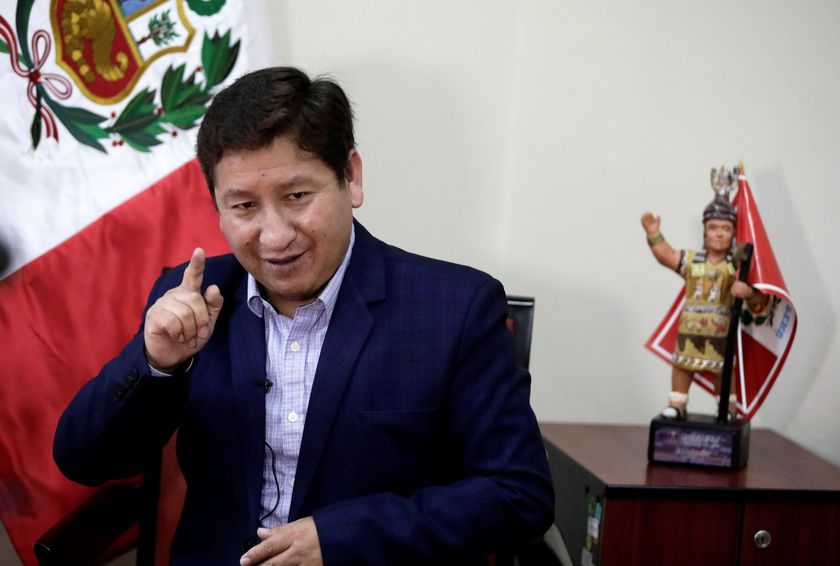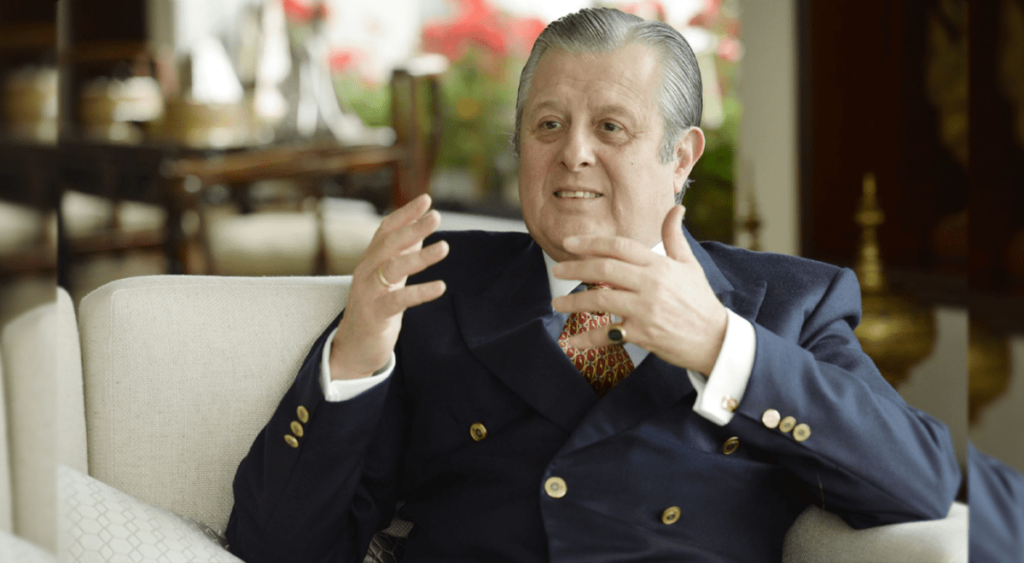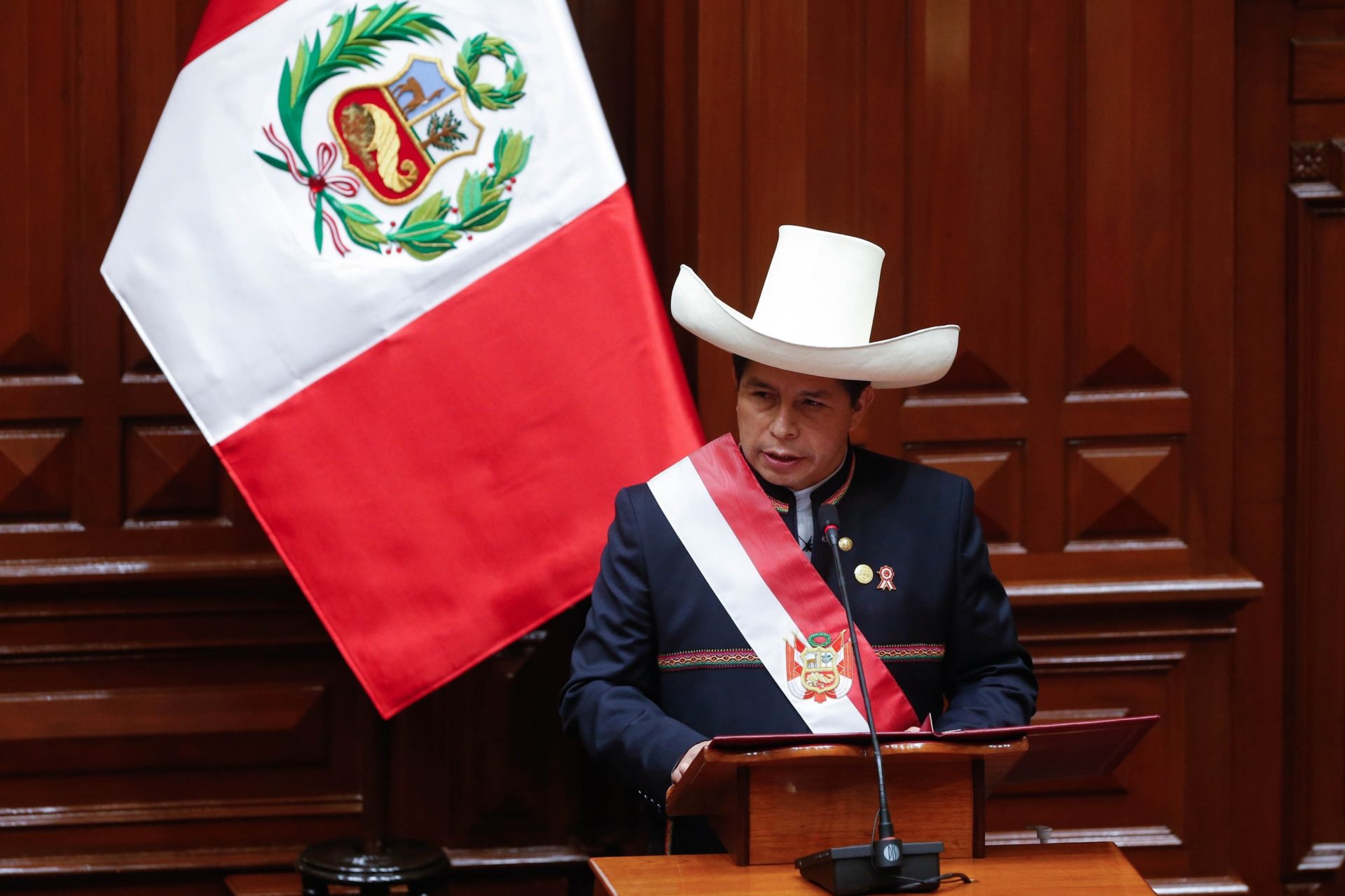In Peru, barely elected President Pedro Castillo immediately faced protests. On July 28, the new leader of the South American country took the oath, and already in the first days of August in Lima, hundreds of people went to a demonstration, accusing the current head of state of corruption, rigging of election results and even terrorism. What’s happening in Peru today? Has the protracted political crisis in the country ended with the coming to power of Castillo?
The second round of the presidential election in Peru was held on June 6, in which the candidate from the left party “Free Peru” (Spanish – Peru Libre) Pedro Castillo (Spanish – José Pedro Castillo Terrones) won 50.125% of the vote. His rival, daughter of the country’s ex-president Alberto Fujimori (Spanish – Alberto Ken’ya Fujimori) and leader of the far-right conservative party “Popular Power” (Spanish – Fuerza Popular), Keiko Fujimori (Spanish – Keiko Sofía Fujimori Higuchi), received 49.875%. The counting of votes dragged on for many weeks. As a result, the gap between Castillo and Fujimori, who represented the Conservatives in the elections, was only about 44 thousand votes.
The President-elect Pedro Castillo took the oath of office on July 28 as head of state. The ceremony took place in the building of the Congress of the Republic of Peru. Prior to that, the former interim president of the country Francisco Sagasti (Spanish – Francisco Rafael Sagasti Hochhausler) with honors left the building of the country’s legislative body, having previously lowered and passed the presidential standard to parliamentarians, which officially marked the end of his presidential term.
However, a few days later, protests against the Castillo government hit the Peruvian capital in a blast. Hundreds of residents of the country opposed the appointment of a new cabinet. The strikers advocated the removal of the “left” leader Castillo from power and argued that they were defending democracy in the country. In addition, in early August, a group of right-wing politicians led by former presidential candidate Lourdes Flores (Spanish – Lourdes Flores Nano) led a protest in Arequipa against the new leadership. Focal strikes still continue to take place in large cities of the country, the largest of them being unfolded in the city of Lima.

As a result, already on August 10, Peruvian periodicals announced that the Prime Minister of Peru, Guido Bellido Ugarte, had become a defendant in a money laundering criminal case. Bellido is accused of involvement in illegal financing of the election campaign of the ruling “Free Peru” party. Together with him, the chairman of the party, Vladimir Cerrón (Spanish – Vladimir Roy Cerrón Rojas), his brother and press secretary Valdemar Cerrón, as well as the political force itself as a legal entity, were involved in the case.
In addition, a few days after this news, the General Prosecutor’s Office of Peru announced the start of an investigation against the chairman of the country’s new government on suspicion of terrorism. A corresponding investigation was opened by a special interregional prosecutor’s office on terrorism and crimes against humanity. The case was opened in connection with the appearance in May of media publications about the links of the aforementioned politicians with the leaders of the left-wing radical terrorist organization “Sendero Luminoso” (which means “Shining Path”). The prosecutor’s office plans to interrogate Bellido and Cerrón.
It is worth recalling that as a result of the terrorist activities of “Sendero Luminoso” in Peru since 1980, over 30 thousand people have died. The material damage caused to the country is estimated at about $ 25 billion. After the arrest of the leader of the group Abimael Guzmán (Spanish – Manuel Rubén Abimael Guzmán Reynoso) in September 1992, it began to lose its former influence. In recent years, small groups of extremists have continued to attack the Peruvian military and law enforcement officials. One of the last acts of the “Sendero Luminoso” terrorists was the killing of 14 civilians at the end of May. The massacre took place in the department of Cuzco two weeks before the second round of the presidential election, which was won by Castillo.
Following the initiation of these two trials, on August 18, the Peruvian President Pedro Castillo accepted the resignation of the country’s foreign minister, Héctor Béjar Rivera. “Hector Béjar has submitted a letter of resignation to Pedro Castillo from the post of Foreign Minister. In this regard, the head of state accepted the resignation of Mr. Béjar”, – quoted by the periodical “El Peruano”.
The day before, the media of the South American country began to replicate Béjar‘s November statements. He stated that “terrorism in Peru began with the Navy, which can be traced back historically, as they were prepared for this by the CIA”. In addition, the attention of journalists was attracted by the statement of the former foreign minister that the appearance in Peru of the radical left terrorist organization “Sendero Luminoso” “was largely the result of the work of the CIA and special services”. Such statements by the foreign minister drew sharp criticism from the opposition, as well as the Navy. Béjar has taken over as Peru’s Foreign Minister since Castillo took office (July 28, 2021).

The post of foreign minister of Peru, vacated after the scandalous resignation of Hector Béjar, was re-occupied by Oscar Maúrtua de Romaña (Spanish – Óscar José Ricardo Maúrtua de Romaña). It is noted that de Romagna served as the head of the Ministry of Foreign Affairs of the South American country in 2005-2006, when the country’s leader was Alejandro Toledo. In turn, the leader of the “Free Peru” party, Vladimir Cerrón, criticized Castillo‘s decision. According to Cerrón, the new foreign minister does not reflect the mood of the current ruling party. In addition, the “Free Peru” Party is calling on its supporters to mobilize in support of the Cabinet of Ministers Pedro Castillo, which is due to receive legislative approval (by the Congress of the Republic of Peru) later this week.
This time, the approval of the new Cabinet of Ministers is taking place against the backdrop of the health crisis caused by the COVID-19 pandemic, corruption scandals, litigation and large-scale strikes. According to the results of the latest poll of the Institute of Peruvian Studies (Spanish – Instituto de Estudios Peruanos), the disapproval rating of the new president was set at a record high – 46%. Today, Pedro Castillo faces a number of structural tasks: to finally form the Cabinet of Ministers and approve it in Congress, to pacify the country, and also to overcome the internal crisis of the ruling “Free Peru” party, because such a split can greatly affect the position of the head of state.
The next few months will show which way Peru will develop. However, one thing is very clear that the electoral process that took place this year became an important milestone in the modern history of the South American state. Now “at stake” is not just the struggle of the “right” forces seeking to take revenge against the “leftist” leader, but the main dilemma: what place will Peru occupy in the geopolitical configuration at the regional and international levels.


